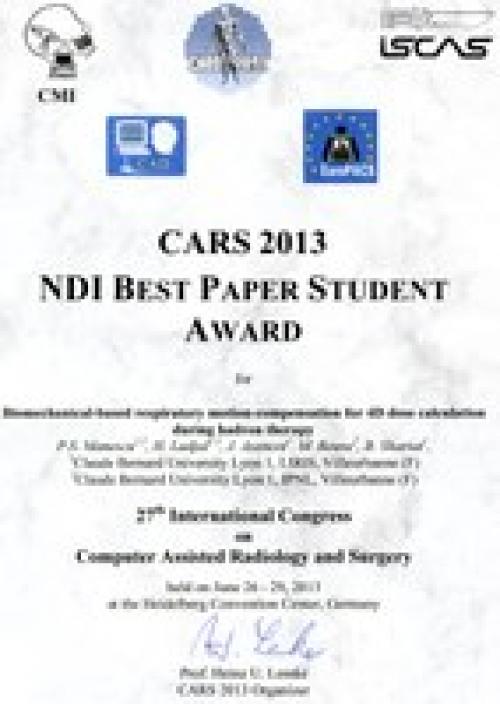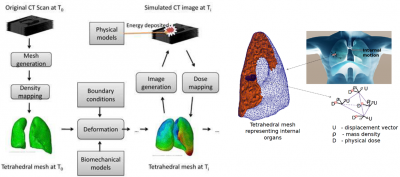
Petre Manescu lauréat du "best paper student award" à la conférence CARS 2013
In this paper,the authors present an improved iomechanical-based model of the respiratory system developed at LIRIS laboratory for 4D dose calculations for lung cancer treatment.
The preliminary results show that our method could potentially become a valuable clinical tool for diagnosis and treatment planning based on 4D specific multi-physics modeling of the respiratory system.

Dose accumulation process over a deformable tetrahedral mesh representing human lungs
Reference of the paper:
Biomechanical-based respiratory motion-compensation for 4D dose calculation during hadron therapy - P. Manescu, H. Ladjal, J. Azencot, M. Beuve, B. Shariat, 27th International Congress and Exhibition Computer Assisted Radiology and Survery CARS 2013, Heidelberg, Germany in June 26-29, 2013.
Abstract:
Tumor motion during irradiation reduces target coverage and increases dose to healthy tissues. The continuous organ density changes due to respiratory motion and affect the ranges of ions which can lead to unwanted dose distributions in the case of lung tumors. In this paper we present an improved biomechanical-based model for 4D dose calculations for lung cancer treatment. As opposed to the classical methods, we can generate intermediate density maps without using linear interpolation to approximate dose at intermediate breathing states. We represent the human anatomy as a deformable tetrahedral grid where the mass density and displacements are distributed to the nodes of the mesh. In this way, we can simulate at the same time and within the same data structure: organ motion, mass density variations and dose distribution without having to perform voxel tissue tracking.
